Abstract
Thyroid function tests were performed and thyroid antibodies and serum cholesterol concentrations measured in 12 women aged 60 years or under with severe coronary artery disease proved by coronary angiography. This group was compared with 11 women with normal coronary angiography. Ten out of the 12 women with coronary artery disease had an exaggerated response of thyroid stimulating hormone to thyrotrophin releasing hormone compared with two out of 11 controls (p less than 0.008). The mean serum cholesterol concentration was significantly higher in those with coronary artery disease than in the controls. Thyroid antibodies were present in four of those with coronary artery disease and one of the controls. There was no difference in the risk factors for coronary artery disease between the two groups except for cigarette smoking. Eleven out of 12 in the coronary artery disease group smoked cigarettes compared with four out of 11 in the control group (p less than 0.01). Minimal impairment of thyroid function is an important risk factor for coronary artery disease in women.
Full text
PDF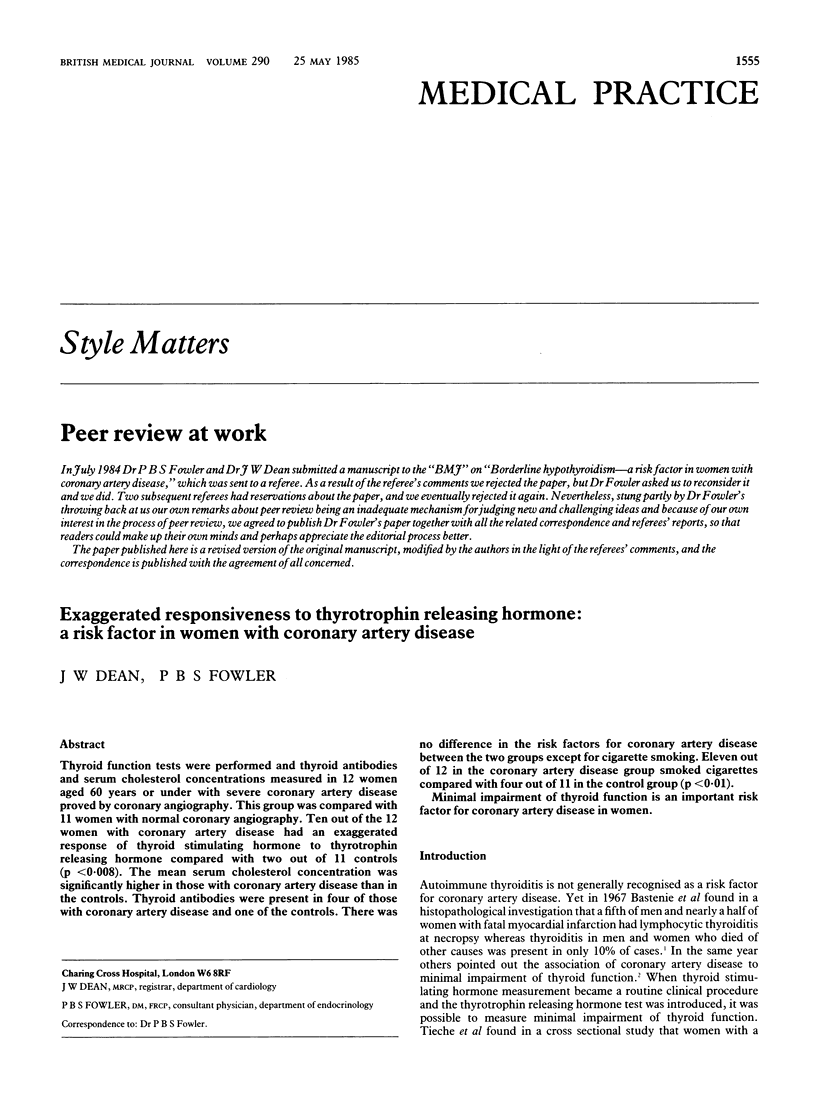
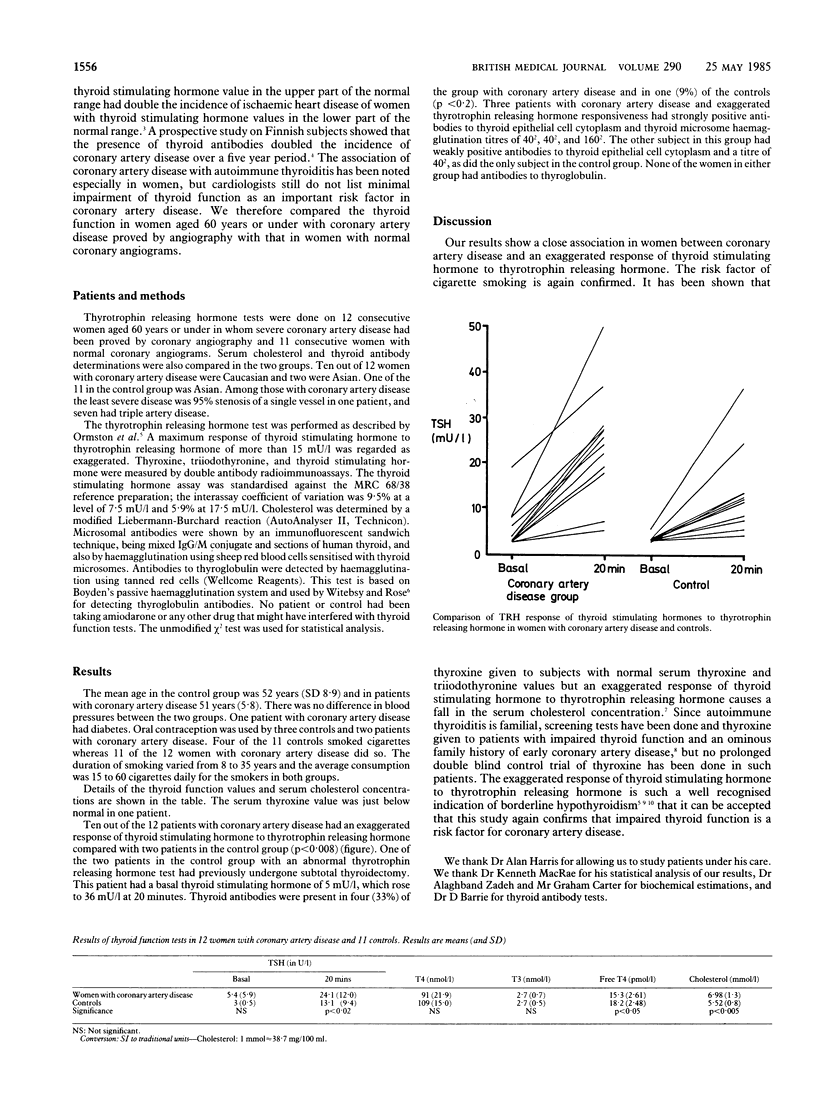
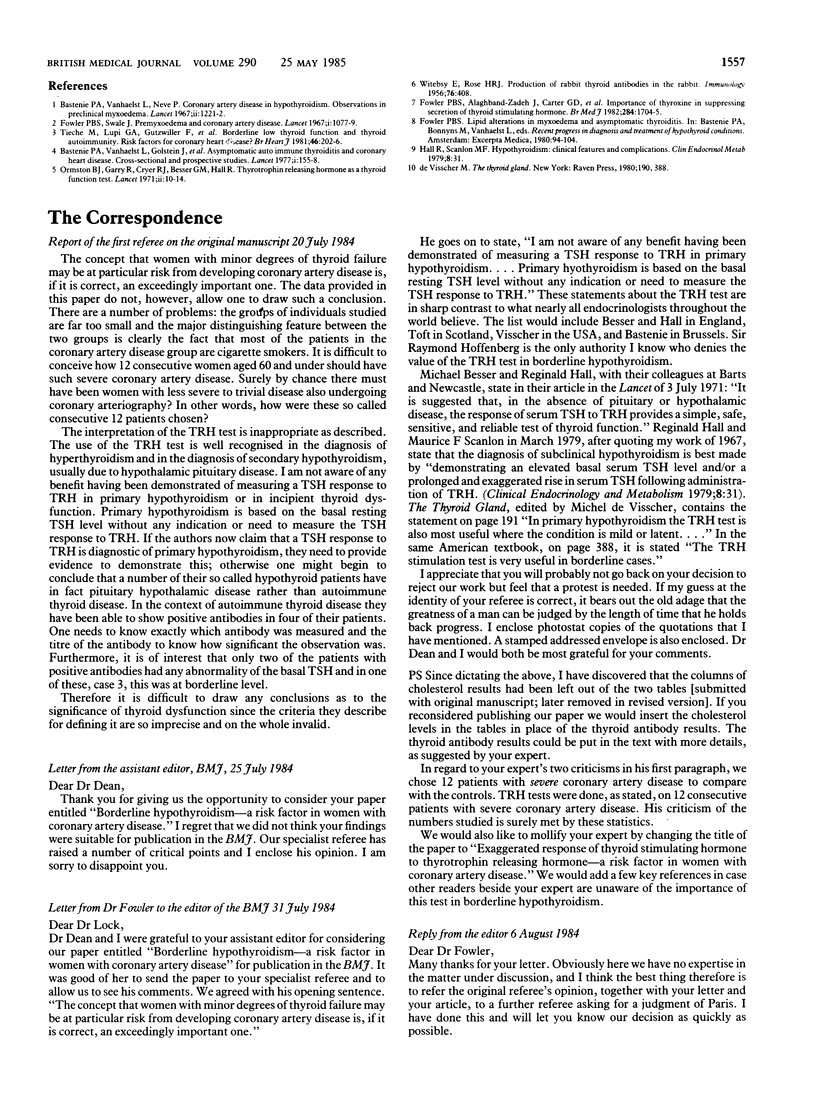
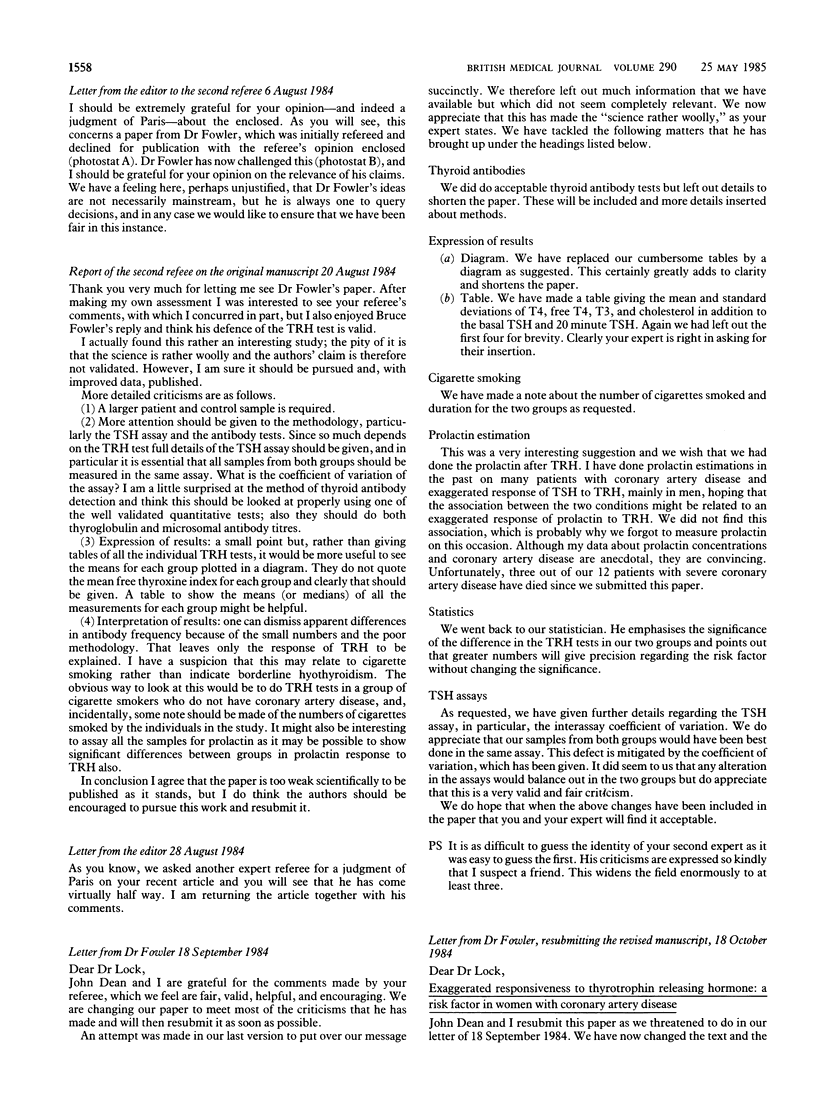
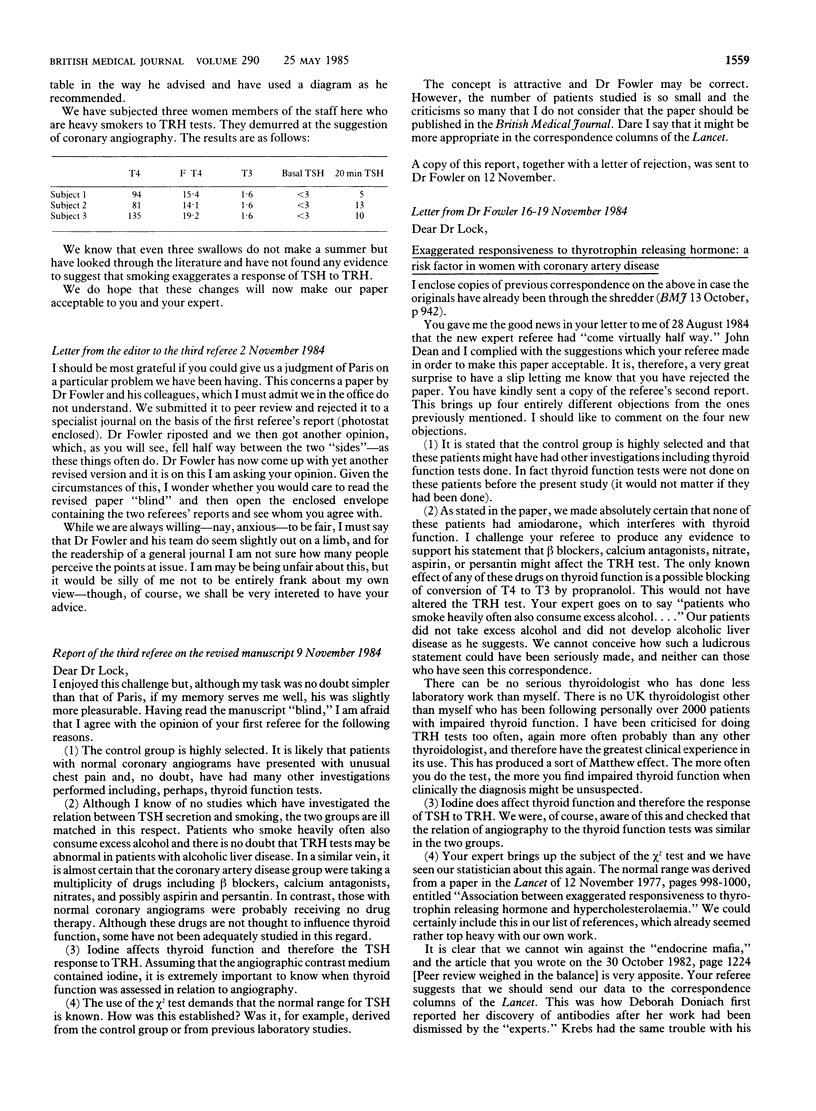
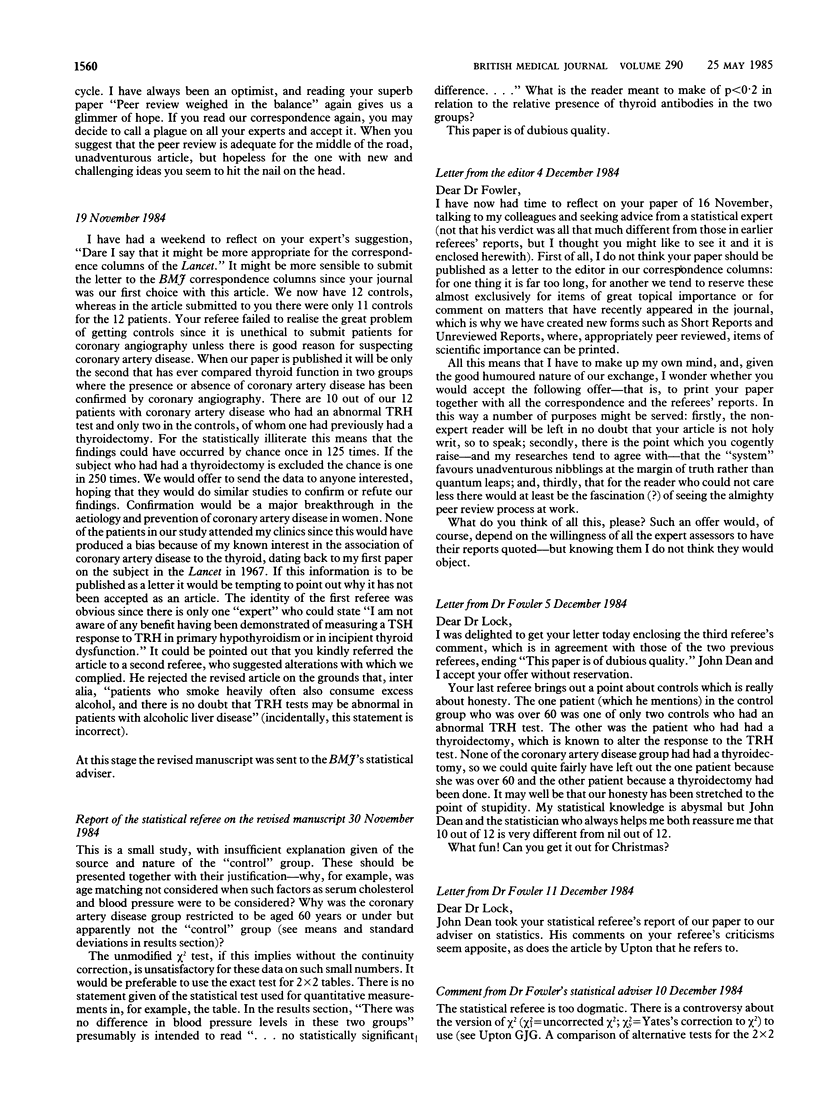
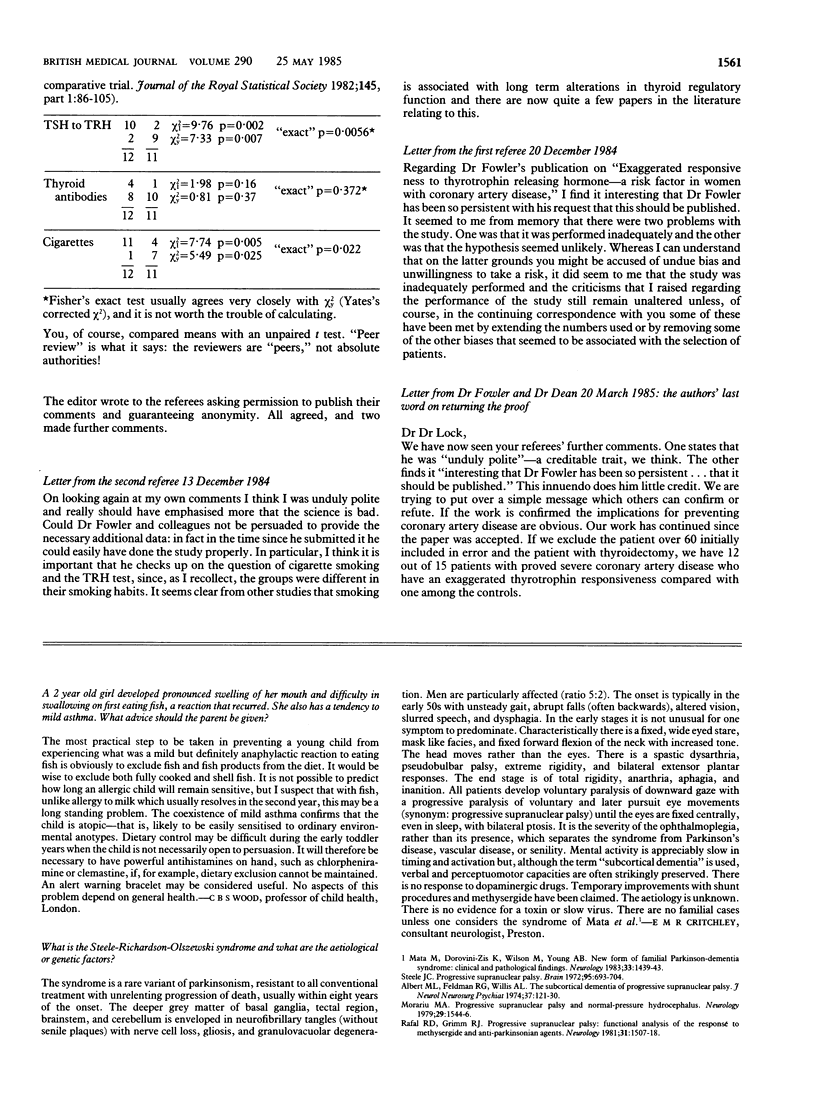
Selected References
These references are in PubMed. This may not be the complete list of references from this article.
- Albert M. L., Feldman R. G., Willis A. L. The 'subcortical dementia' of progressive supranuclear palsy. J Neurol Neurosurg Psychiatry. 1974 Feb;37(2):121–130. doi: 10.1136/jnnp.37.2.121. [DOI] [PMC free article] [PubMed] [Google Scholar]
- Bastenie P. A., Vanhaelst L., Golstein J., Smets P. Asymptomatic autoimmune thyroiditis and coronary heart-disease. Cross-sectional and prospective studies. Lancet. 1977 Jul 23;2(8030):155–158. doi: 10.1016/s0140-6736(77)90177-5. [DOI] [PubMed] [Google Scholar]
- Mata M., Dorovini-Zis K., Wilson M., Young A. B. New form of familial Parkinson-dementia syndrome: clinical and pathologic findings. Neurology. 1983 Nov;33(11):1439–1443. doi: 10.1212/wnl.33.11.1439. [DOI] [PubMed] [Google Scholar]
- Morariu M. A. Progressive supranuclear palsy and normal-pressure hydrocephalus. Neurology. 1979 Nov;29(11):1544–1546. doi: 10.1212/wnl.29.11.1544. [DOI] [PubMed] [Google Scholar]
- Ormston B. J., Cryer R. J., Garry R., Besser G. M., Hall R. Thyrotrophin-releasing hormone as a thyroid-function test. Lancet. 1971 Jul 3;2(7714):10–14. doi: 10.1016/s0140-6736(71)90005-5. [DOI] [PubMed] [Google Scholar]
- Rafal R. D., Grimm R. J. Progressive supranuclear palsy: functional analysis of the response to methysergide and antiparkinsonian agents. Neurology. 1981 Dec;31(12):1507–1518. doi: 10.1212/wnl.31.12.1507. [DOI] [PubMed] [Google Scholar]
- Steele J. C. Progressive supranuclear palsy. Brain. 1972;95(4):693–704. [PubMed] [Google Scholar]
- WITEBSKY E., ROSE N. R. Studies on organ specificity. IV. Production of rabbit thyroid antibodies in the rabbit. J Immunol. 1956 Jun;76(6):408–416. [PubMed] [Google Scholar]


